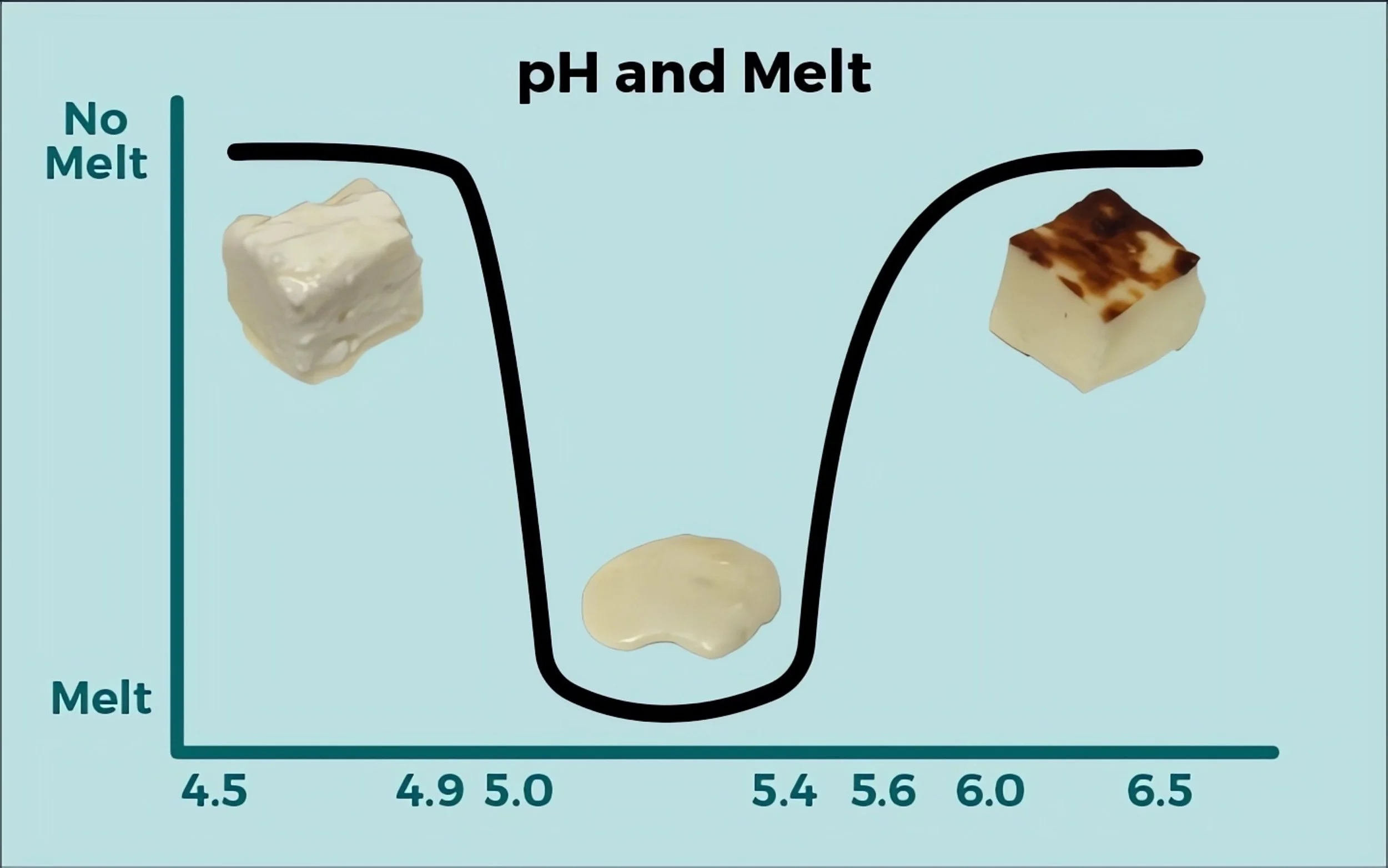What Makes Cheese Stretchy?
Grilled cheese with stretchy cheese photo credit Second Mouse Cheese
When it comes to stretchiness, cheese stands alone. Virtually no other food replicates the ooey-gooeyness of a mozzarella or a triple cream.
But even among cheeses, the ability to melt and flow isn’t universal. There are “two large forces at work that will determine whether a cheese will stretch or not,” says Dean Sommer, cheese and food technologist at the Center for Dairy Research in Madison, Wisconsin—and he has a simple analogy to understand it.
The calcium and protein Structures of cheese
Dean Sommer
“Think of a wooden ladder,” Sommer says. It has two long rails held together by multiple shorter rungs. In cheese, the rungs of the ladder represent calcium and the rails represent the protein structure.
In a young cheese, the ladder’s rungs stay tightly bound to its rails because there’s not enough time for the lactic acid that ferments it to loosen them up. When the ladder stays intact, the cheese does not stretch.
As a cheese matures, though, that acid gradually dissolves the bond between the calcium and protein structures. “Over time, the rungs of the ladder become much more infrequent and weaker, and now the rails can slide past each other,” Sommer explains. The shimmy they perform is the cheese stretching. The ladder still has all its pieces but they’re no longer in their original places.
Cheese acidity and meltability
pH cheese melt chart credit Cheese Science Toolkit
The cheese’s acid can only dissolve so much of the wood before the whole ladder falls apart, however. When the rungs are loose and whittled down, and the rails are chopped into bits, the cheese is no longer stretchy. The ladder is now so broken, it can’t be repaired.
“The protein structure is destroyed and it doesn’t stretch very well,” says Sommer. “So, like mozzarella, the first week to two weeks it doesn’t stretch very well. Then, say, from two weeks to two months, it stretches really well. But after two months, it’s just kind of soup and it doesn’t stretch well at all.”
Although many cheeses stretch when heated—-Gouda, Cheddar, havarti, muenster, and Gruyere, among them—mozzarella, which is repeatedly pulled as it is cooked, is the meltiest of all. The method “aligns all the protein fibers in a parallel fashion so they’re ready to be stretched,” Sommer says. “You can stretch it for six feet without breaking it. Other cheeses will stretch but nowhere near that length because they don’t undergo that cooking, stretching, and kneading process.” Provolone has a similar stretch because it goes through a parallel process.
Like older cheeses that lose their stretchiness over time as acid breaks down the “ladder” of calcium and protein, cheeses like feta or cottage cheese that are high in acid from the get-go won’t stretch either—but for a slightly different reason.
When there is a lot of acid, “the strands of proteins stick together like two magnets sticking together,” says Sommer. “The proteins can’t slip by each other because they’re so tightly bound by electromagnetic forces.” In a lasagna, the layer of ricotta looks the same after cooking as it did before while the mozzarella on top essentially liquifies.
Think of it in Goldilocks terms: Cheese with too little acid won’t stretch; cheese with too much acid won’t stretch; but cheese with enough acid to dissolve some, but not all, of its calcium, is just right for melting.




